SM PRIME leads with Green Buildings for Sustainable Cityscapes
SM PRIME leads with Green Buildings for Sustainable Cityscapes
Cities continue to influence how we live our lives, from adopting greener lifestyles to lowering overall carbon emissions to aid in the preservation of the world. The creation of green buildings, which provide clever innovations that interact with the environment and enhance the well-being of the people who use these spaces on a daily basis, is the first step toward a successful shift to greener cityscapes.
Green buildings may reduce carbon emissions by 40 percent on average, water usage by 30 percent, and garbage output by 70 percent, according to a study by the US Green Building Council. Beyond environmental benefits, green buildings assist address social requirements by improving spaces, safeguarding human health, allowing differently-abled members of the community to participate actively, and ensuring affordable access to basic services. Green buildings command better rent potentials, fostering ‘greenovation,’ and promoting cultural and recreational activities without affecting the environment, among other things.
SM Prime has led the way in incorporating sustainability and resiliency into its designs, ensuring that each component works together as a fully-integrated metropolis of the future.
“Constructing greener buildings provides holistic solutions not only reducing emissions but also promoting social well-being.” shares Hans T. Sy, SM Prime Holdings Chairman of the Executive Committee. “We see this in our developments which drives us to build greener and even retrofit our existing malls to meet green standards.”
SM’s developments include the SM Baguio extension, SM North EDSA BPO offices, SM Megamall Mega Tower, and SM Retail Corporation, to name a few, all of which have received LEED Gold certification or are in the process of earning it.
SM Aura
The iconic SM Aura at the Bonifacio Global City is a mixed-use development that incorporates retail, trade halls and a Grade A office tower. The LEED Gold Certified mall promotes resource efficiency, green mobility and green landscapes.
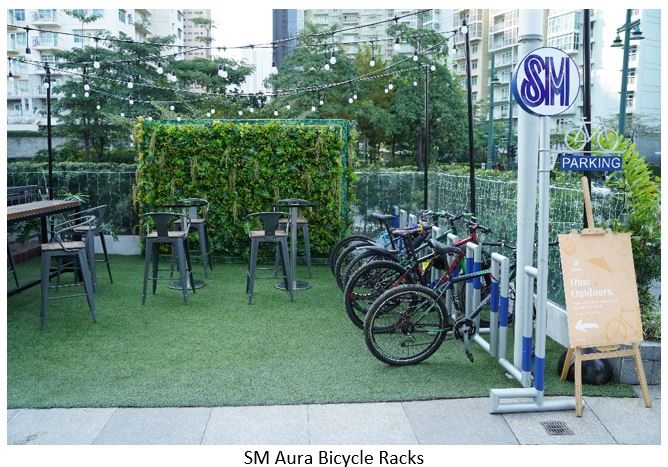
- Green Mobility. Cycling is encouraged with accessible bicycle storage, cyclists’ shower rooms and convenient access to safe lanes to public transit.
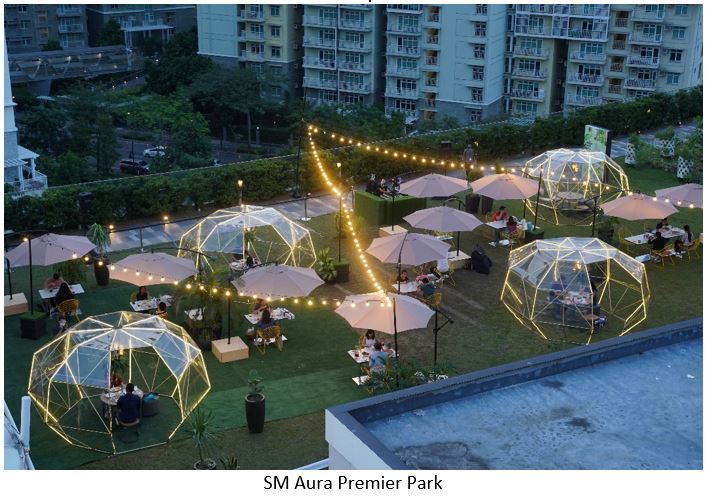
- Green Landscapes. The SM Aura Premier Park covers over 55% of the building, uses recycled water and provides enough room for plants to grow while protecting the building and people from heat.
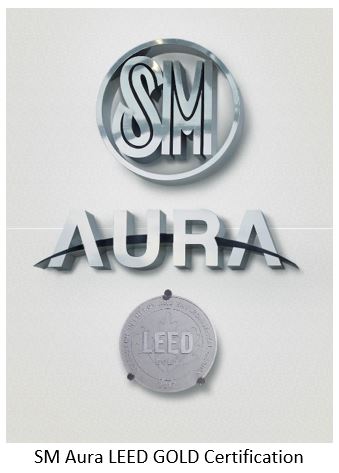
- Resource Efficiency. SM Aura uses 16% less than conventional buildings through a high- performance building envelope that reduces solar heat while allowing sufficient sunlight. Through low flow water sensor and metering faucets, it also reduces 1/3rd of its potable water use. Only low emitting materials were used as paint, adhesive sealants and floor materials.
Conrad Manila
Known as a lifestyle center, Conrad Manila is LEED Gold Certified. The hotel is designed with a dramatically-formed angular structure that houses a stylish 347-room hotel, spa and function space while S Maison is home to a swathe of smaller, more bespoke outlets for brands.
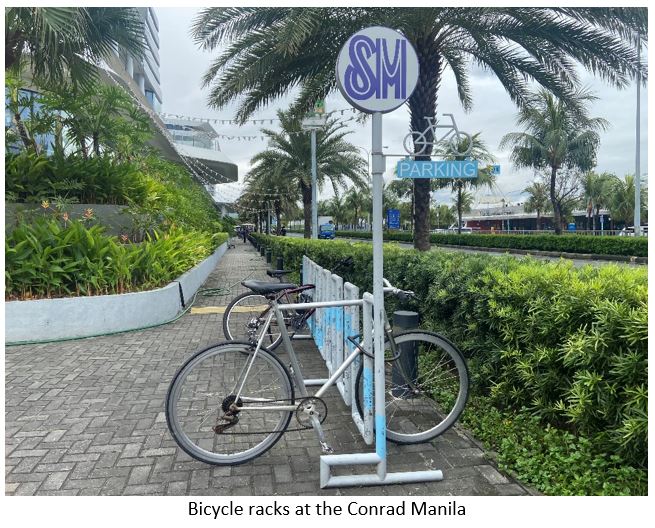
- Luxury Means Green Mobility. Boasting of high-end luxury experience, Conrad Manila remains environmentally friend by providing preferred parking slots for low emitting fuel efficient vehicles, car-sharing vehicles and special parking spaces and facilities for cyclists.
- Eco-Friendly Materials. Locally manufactured and recycled materials and products were used whenever possible with more than 80% of the project’s construction waste recycled. Filtration systems maintain a minimum efficiency rating of 90% to eliminate airborne particulates.
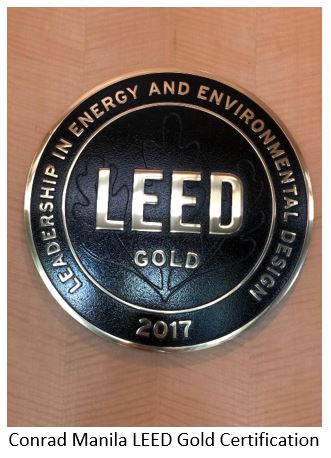
- Resource Efficiency. Conrad Manila is designed to reduce energy around 12% less than American energy standards. Its water heating system recovers heat from the chiller condensers to produce hot water while its ventilation system recovers the coolness from the exhaust air, returning that into the building. The hotel is outfitted with occupancy sensors, tinted with low emissivity insulated glass to keep heat and noise out,
Going beyond the LEED Certification, SM Engineering and Design Development, the mall’s design and construction arm has implemented these sustainable design strategies on the following projects:
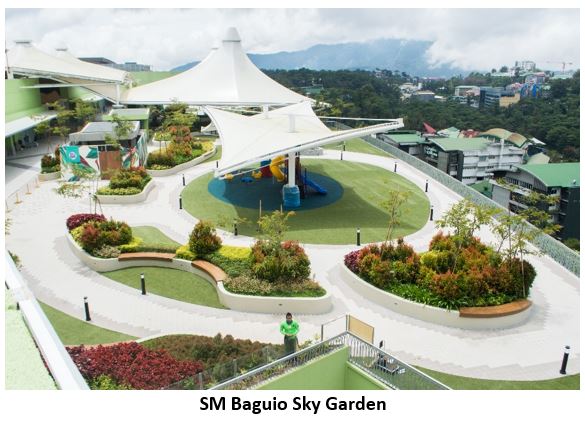
SM Baguio brings outdoor and indoor as one space optimizing natural lighting and ventilation with the Sky Garden. It has a green roof system as well as a provision for an underground water reservoir for storage and reuse of rainwater with a capacity of 4,389 cubic meters.
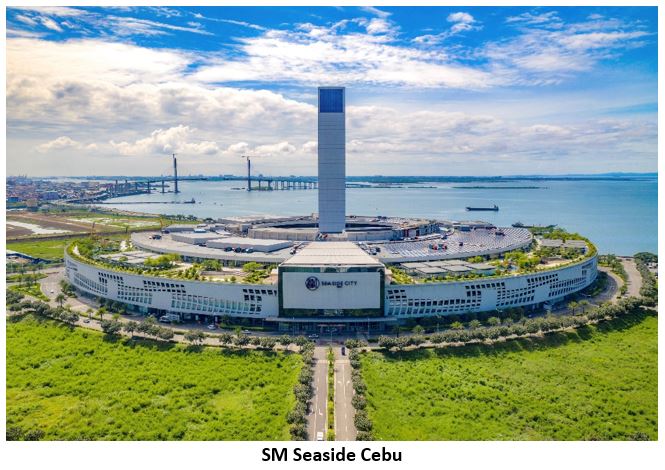
SM Seaside Cebu mall goers can enjoy an extensive green area, center courtyard and roof garden. Constructed with low glass and utilizes EchoStop for noise management, the building is designed to maximize natural light and ventilation.
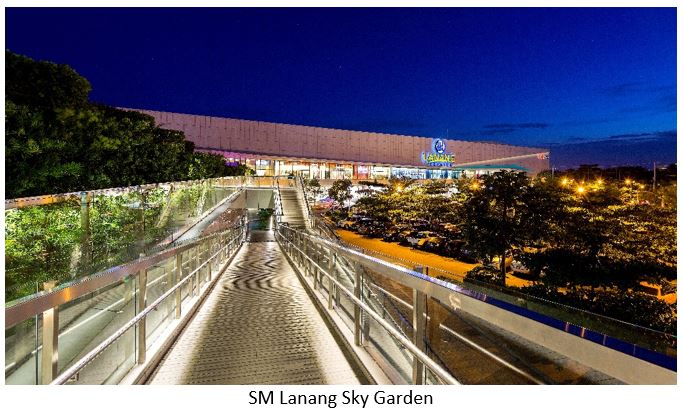
SM Lanang Premier showcases lush greens, a roof garden and green pavers that encourage filtration and allow stormwater back to the underground soil. It is equipped with a rain water catchment system and a water reservoir with a 546-cubic meter capacity based on 425mm per hour rainfall intensity. It also has a materials recovery facility which receives, segregates and prepares recyclable materials for marketing to end-user manufacturers.
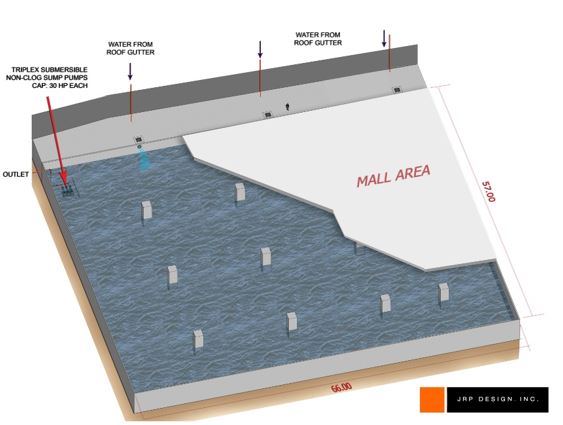
SM City Masinag helps communities avoid flood waters through its 15,033 cubic meter water catchment facility. It is designed with green screens to promote vertical plant growth and is constructed with Clerestory windows as a source of natural light.
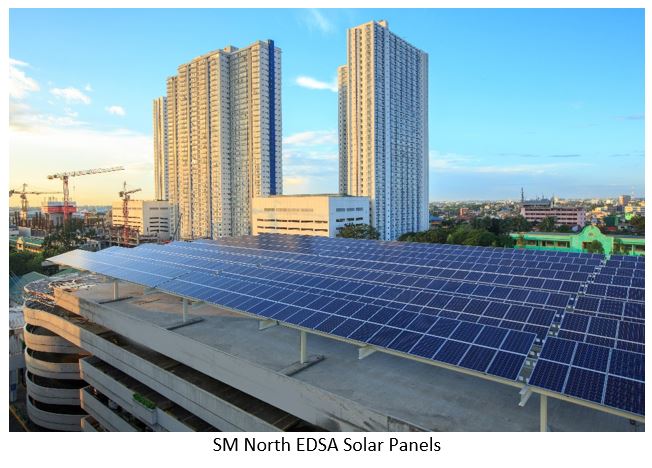
SM North Edsa is one of the pioneers of the use of solar panels. It is also the first to have the Sky Garden and elevated parks.
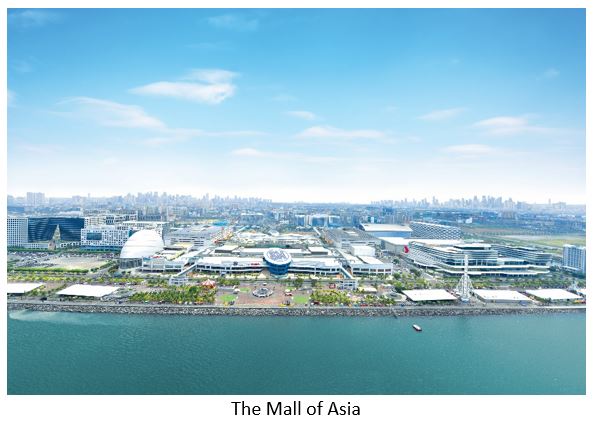
SM Mall of Asia is uniquely designed with a seawall to avert any damage from potential storm surges or seal level rise. Built on reclaimed land, it used an excavation method providing a greater degree of protection against liquefaction and seismic events. It is also elevated above the required building levels and is equipped with wave return and drainage channel to prevent flooding due to storm surges and high waves.
SM Marikina sits on 246 stilts and is built 20 meters beyond the compliance for safety zone. At 20.5 meters above natural ground level, it serves as a first responder and a place of refuge for the residents of Marikina during times of calamities.
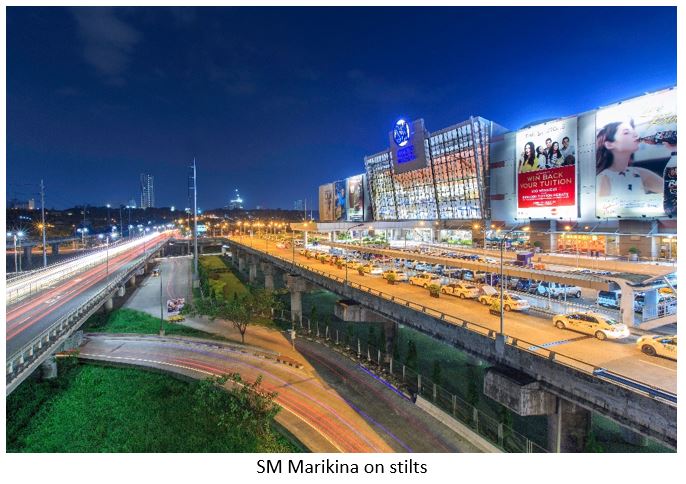
Real estate investors have developed to choose places that serve the rising population’s sustainability goals, both for business and personal use. The public’s desire for more sustainable communities that are planned for environmental and social well-being is supported by the pursuit of green construction standards. SM Prime thinks that developers should collaborate with communities to address climate change and achieve shared goals, such as a greener, more sustainable cityscape for everyone to enjoy.
“Creating a more sustainable way of life requires a sustainable backdrop that supports the shift. At SM Prime, our passion is to create one that is sustainable and resilient for the life we want for today and the future,” Mr. Sy said.

